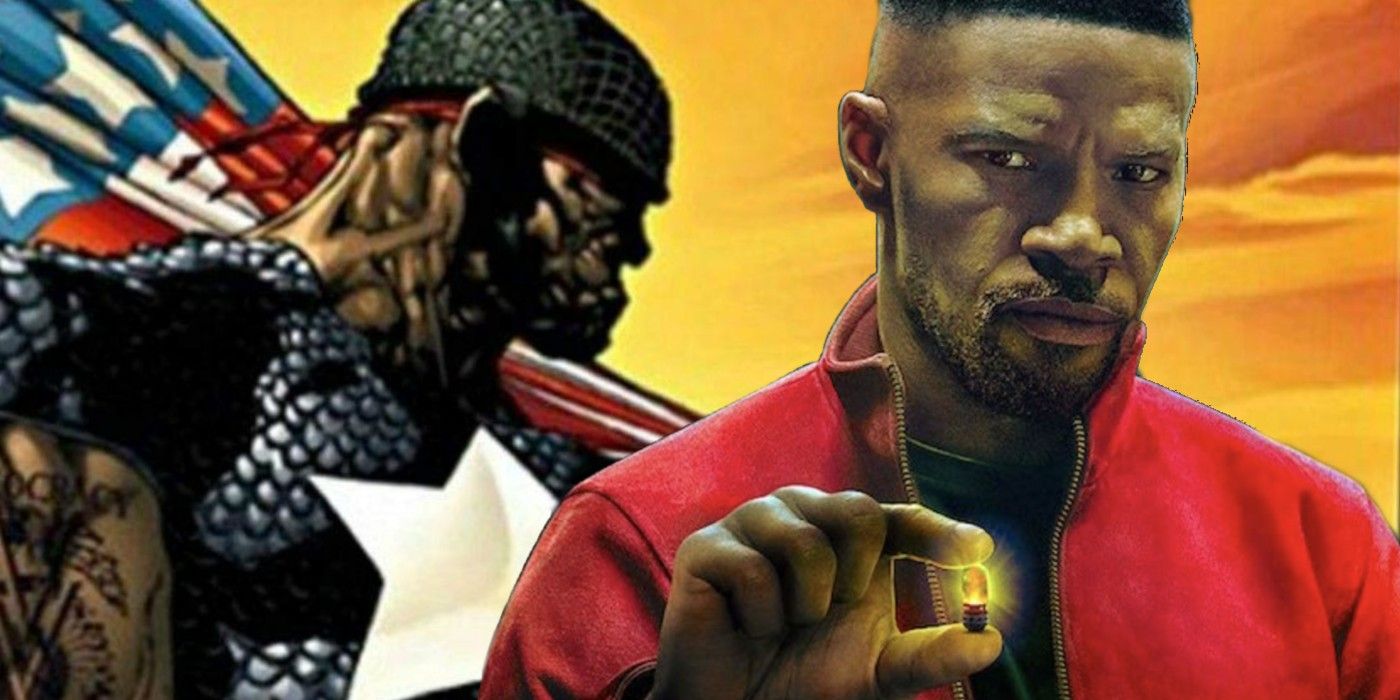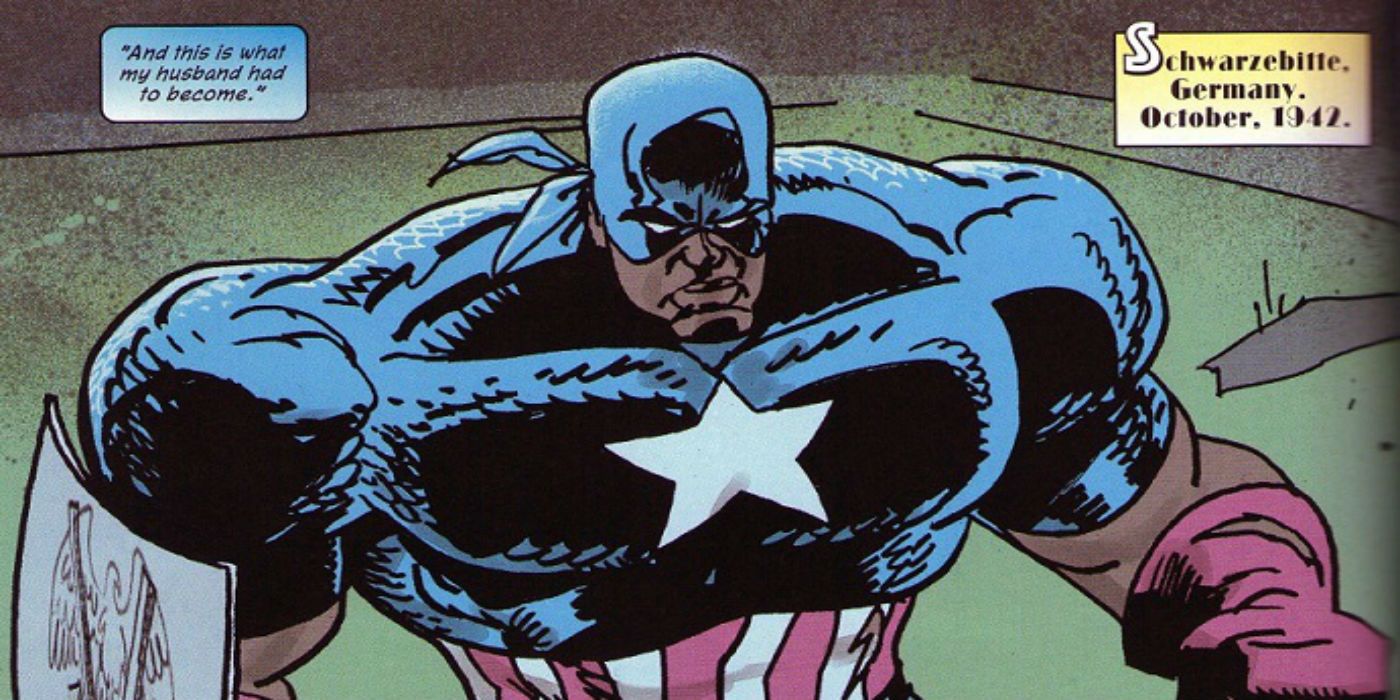
Project Power's origin story for the existence of the Power drug and superpowers generally borrows a key story detail from the murkier side of Captain America's comics history. Netflix's blockbuster alternate superhero sci-fi quickly became a popular new release hitting the number one spot of the Top Ten in the wake of its release and making a Project Power sequel that little bit more likely. And while the movie appears to be a knowing pastiche of existing superhero movie tropes and is not directly based on a comic, Project Power does owe some of its reference points to comics. There are superpowers in there, for instance, that clearly reference (or reimagine) comics characters like the Human Torch, Wolverine, and the Abomination.
You can also add Captain America to that list of references, though in a slightly less overt way to a character in Project Power taking his super soldier powers. More subtly, Jamie Foxx's backstory as Art - the genetic source of Power's ability to affect users' latent "super-DNA" - mirrors that of Isaiah Bradley in Marvel's Captain America comics. Bradley, who could appear in Disney+'s The Falcon and the Winter Soldier (played by Carl Lumbly) was the first black Marvel character to take on the mantle of Captain America and his introduction in the Marvel Comics limited series "Truth: Red, White & Black" offered a new take on Cap's history that changed everything.
In effect, Jamie Foxx's Art shares his history with the forgotten Captain America. The end result isn't quite the same, because Art isn't gifted the same natural powers as his daughter gains from him, but the bones of the tragic story are very similar. Both involve experimentation and exploitation linked to military veterans and both have a grim parallel in real-life.

In "Truth: Red, White & Black", it was revealed that Bradley was part of a program that saw a huge number of black soldiers serving in the American army during World War II enlisted as test subjects to try and recreate Steve Rogers' super-soldier serum. The goal was to create a new Captain America through Project Rebirth, a program that mirrored the real-life Tuskegee Syphilis Study for which African American men were duped into believing they would be receiving free medical care but were really infected with syphilis. This came at a time when there was no known cure of the disease, in order to observe the full course of the effects syphilis had on the body up to death. More than 120 test subjects were allowed to die of syphilis or related complications and horrifyingly 40 of their spouses caught it subsequently and 19 children were born infected.
In the comics, Isaiah Bradley was one of 300 test subjects taken for a secret "night mission" who became test subjects for the early forms of the new super-soldier serum. All but five died during the tests and the government cleaned up after itself by killing everyone else associated with the program. Eventually, Bradley would be the only surviving super-soldier who set out to destroy the German equivalent program and who went on to become a legend among Marvel's black characters.
Project Power's superpower backstory is revealed as Art confirms he was part of experiments done by private military contractor Teleios after he left the army. He and other veterans were zapped with radioactive material to try and turn them into superheroes as Teleios sought to make their own saleable superhero formula. The consent aspect is different, but the exploitation element is certainly there, particularly in terms of the devaluation of life. Hopefully, this origin story is something a possible Project Power sequel can explore more because it deserves to be told, particularly if the film-makers lean even more into the parallel with Isaiah Bradley's story.
from ScreenRant - Feed https://ift.tt/3gadp3A



0 Comments